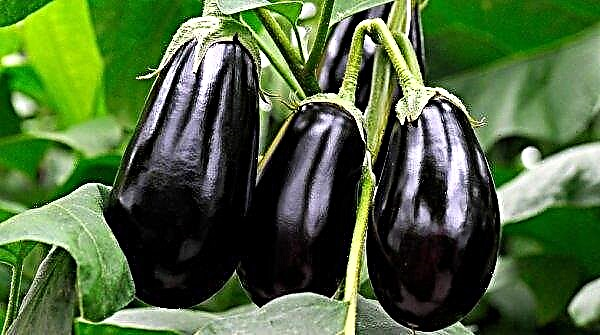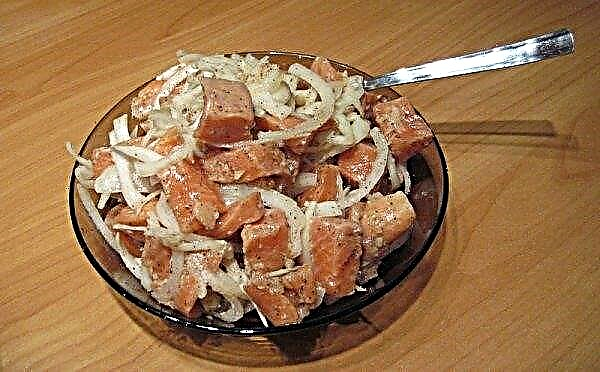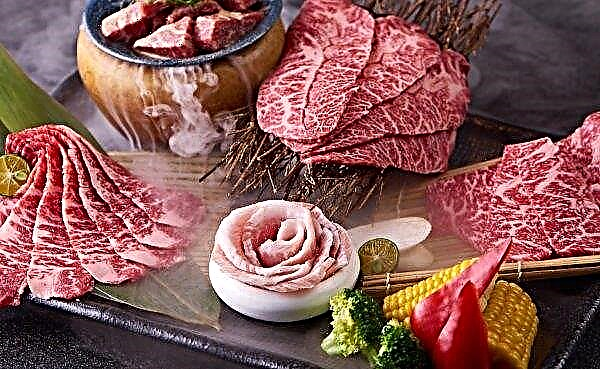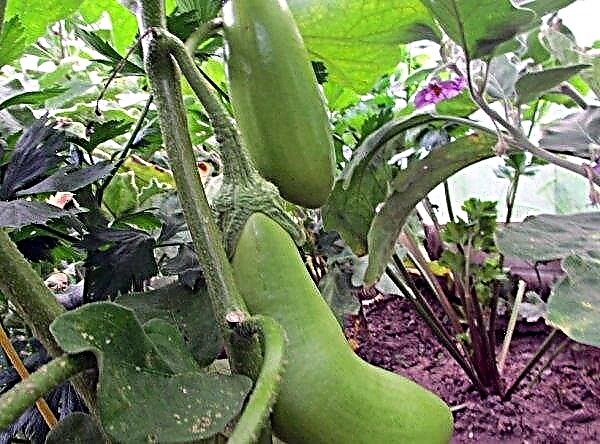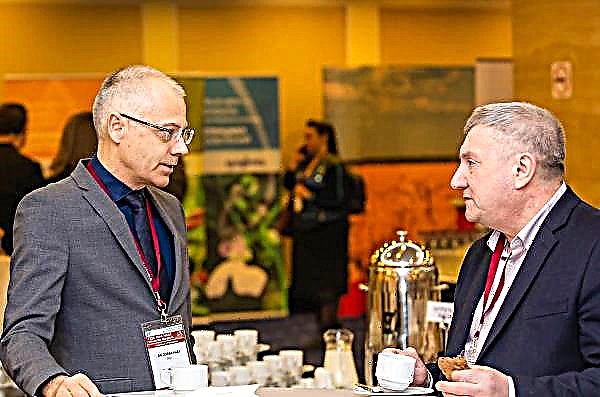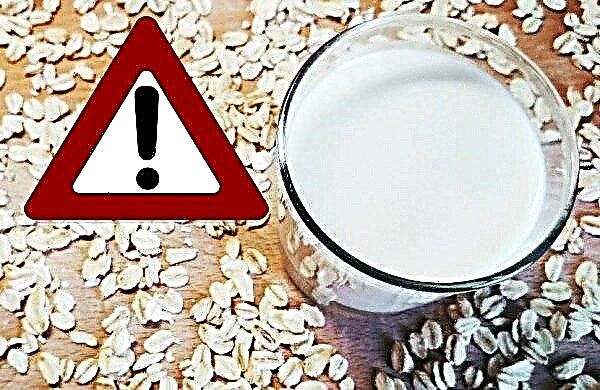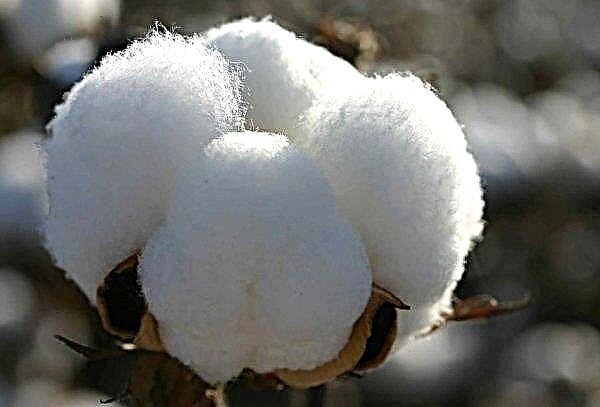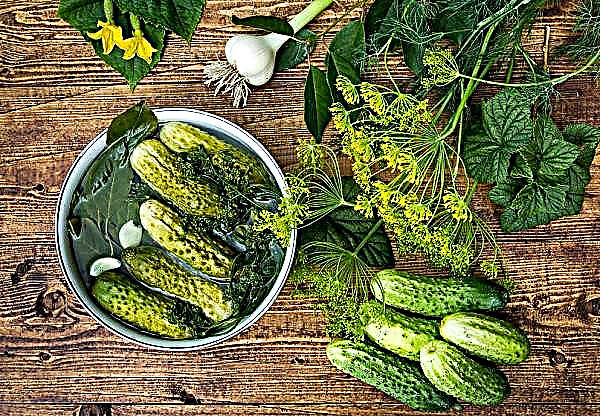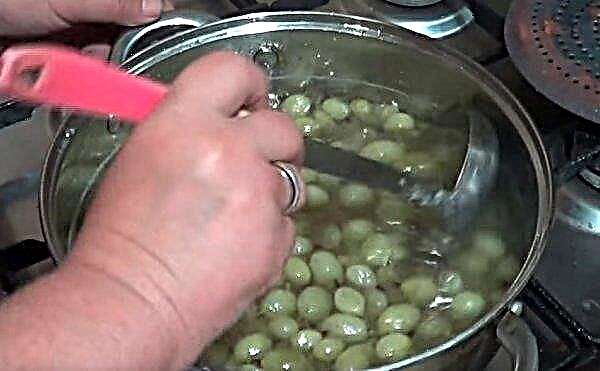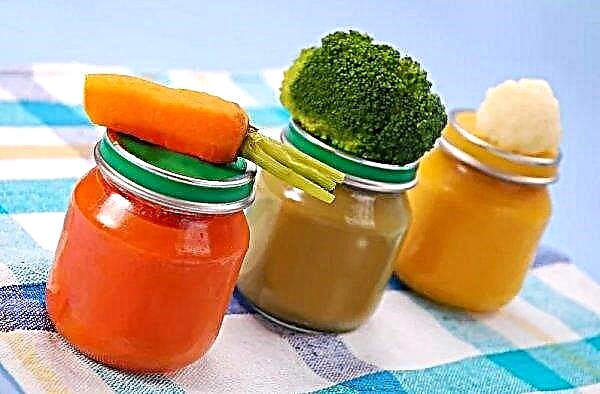Among peaches, the old Canadian Veteran variety deserves special attention. It is in no way inferior to new breeding developments in fruit quality and yield. For more details about the features of this culture and the rules for growing it, read below.
History of Veteran Variety Breeding
The culture in question was bred by Canadian breeders in 1925 in Ontario. Elbert Ranny and Vaykan were taken as parental specimens. Since 1948, the variety was introduced into the state testing program, which passed with success. In 1959 he was included in the state registry for the North Caucasus region. Today, it deservedly occupies a niche in the championship among farmers.
Did you know? Peach has a calming effect on the nervous system, so in Hungary the fruits are called "fruits of tranquility."
Veteran Variety Characteristics
The plant form of this variety is a tree of medium height, reaching 3-4 m. The crown is spherical. Oblivnosti and shoot formation ability is intense. Rose-like flowers. Fruits are rounded, slightly flattened, with a pronounced abdominal suture.

The average weight of one peach is 150 g, but with good care it can reach 185 g. The peel is of medium density, painted in a bright golden-orange color, with a pronounced red blush. Covered with a delicate whitish fluff.
The flesh is golden yellow. The structure is medium-dense, fleshy, very juicy. It tastes sweet with a slight acidity. The fruits exude a pleasant characteristic peach aroma. The bone is half detachable from the pulp. Medium in size, almond-shaped.
Drought resistance, frost resistance
Variety of peaches Veteran is highly resistant to heat. With regard to frost resistance, a threshold for lowering the temperature regime to -20 ...- 22 ° C is permissible. At the same time, there is a high risk of frostbite of the kidneys and roots located in the upper layers of the soil. With return frosts in the spring, annual growths freeze, but quickly recover.
Peach Pollinators Veteran
Veteran is a self-fertile culture. This means that he does not need pollinators. But if other varieties of peach are planted on the site, the commercial and quantitative qualities of the crop will increase. If you need to plant several varieties in the same area, it is best to take Elbert Early or Vaikan.
Variety Productivity
The variety is characterized by high yields. It enters the fruiting phase from 3 years. From the age of 5, there has been a peak in productivity, which is maintained throughout the entire life cycle, and amounts to 40-50 kg per tree.
Did you know? Peach is a close relative of almonds.
Fields of application
In terms of the use of peaches, Veteran is a universal product. Perfectly suitable for fresh consumption and the production of juices, preserves, as well as the preparation of various culinary delights.
Disease and pest resistance
The species is resistant to cytosporosis. Moderately stable against powdery mildew. May be invaded by aphids.
Advantages and disadvantages of the variety
In order to optimize your work on the site and properly organize the agricultural technology of peach tree care seasonally, you need to thoroughly know the advantages and disadvantages characteristic of the variety.
- Among the advantages of peaches Veteran distinguish:
- self-fertility - the plant actively bears fruit even in the absence of pollinators;
- good resistance to drought;
- high productivity;
- the versatility of the fruit;
- good disease resistance.
Of the minuses, instability to aphid attacks is noted, as well as not very high frost resistance. A lot of trouble brings a high ability to thicken the shoots of the crown and abundant leafy. Due to this feature, you will have to pay more attention to pruning.
Rules for planting peach seedlings Veteran
Peaches, without exception, are warm and sun-loving crops. In this regard, it is necessary to more carefully approach the choice of terrain for planting, and also take into account the climatic features of a particular region.
Timing and seat selection
Peaches give a good harvest only in regions with a long warm period. Fully take root in the south and in the middle lane. In the northern latitudes (Ural, Siberia), where the temperature in winter stays for a long time at a mark of -23 ° C and below, seedlings will not survive. The only option is cultivation in the conservatory, under quality shelter.

Regarding the landing dates, you need to focus on the climate of the region:
- in the south - landing is carried out in September;
- in the central strip and the North Caucasus region, young trees are planted in spring when the soil warms up to + 12 ° С.
The landing area is protected from the north wind and draft, well-lit by the sun. The soil on the site should be well fertilized, aerated, permeable. Particular attention should be paid to the location of groundwater - the optimal indicator is 2 m.
When placed next to the walls of residential buildings and household outbuildings, a distance of 2 m should be maintained from the rhizome to the foundation. Also, you should not choose a site on which solanaceous or melon grows in the immediate vicinity of the peach.
Did you know? According to the area of plantings of fruit trees, peach takes 3rd place in Europe, after apple and pear plantings.
Preparing the site and seedlings for planting
Regardless of the timing of planting, you need to start preparing the soil on the site in advance. About six months before the manipulation. To begin with, you should remove all the vegetation. Then dig the soil to a depth of 30 cm. After cultivation, you need to disinfect the area using the Fitosporin solution (5:10 divorced).

A week later, another cultivation is carried out with the introduction of each square meter:
- 10 kg of peat;
- 10 kg of sand;
- 20 kg of manure (can be fresh or rotted).
2 months before planting, the soil is again cultivated to a depth of 30 cm. Immediately before planting, a hole is prepared with a depth of 0.5 m and a similar width. The upper 20 cm of soil is removed, and the remaining 30 cm is mixed with 20 kg of humus and 500 g of wood ash.
The resulting substrate fills the pit by a third, laying it in the form of a cone. 2 support stake are installed in the pit. Saplings pick 1-2 years of age - they have a higher survival rate.

The day before planting, the following work on the preparation of plants is carried out:
- Cut the roots to a healthy tissue (on the cut it is white). The fact is that during the digging of seedlings before sale, some of the roots are damaged, and some dry out during transportation and storage.
- The main conductor is shortened to 60–70 cm, and skeletal branches by 1/3.
- Soak the roots in a solution of "Kornevin" (1 tsp. Powder in 1 l of water) overnight.
Did you know? Unlike other fruits, peaches completely retain their nutritional value and nutrients during heat treatment, including preservation.
The process of planting young seedlings
The trees are planted as follows:
- Roots are placed on the cone formed from the nutrient substrate in the landing pit. They are straightened along the perimeter of the recess so that they do not turn up.
- Next, the plant is aligned with the root neck - after filling the hole with soil, it should rise 3-5 cm above its surface.
- Fill the pit with soil to the top, slightly seal the trunk circle, and pour 10 liters of water.
- After absorbing moisture into the soil, at a distance of 0.5 m from the trunk, a circular earthen roller is built with a height of 15 cm. Inside the resulting circle, the soil is mulched to a height of 8-10 using sawdust, peat and rotted foliage.

Peach Care Rules Veteran
In getting a good harvest, proper care plays an important role.
Agricultural technology of peach cultivation involves the implementation of standard measures for:
- prevention from pests and diseases;
- watering;
- top dressing;
- sanitary and forming scraps;
- preparation for the winter period.
Prevention and protection against pests and diseases
The main work on the prevention of diseases and pest invasion is carried out in the autumn and spring.
They consist in the following activities:
- sanitary pruning in autumn and spring;
- elimination of weeds;
- spraying with Intavir or Spark (according to the instructions) in the phase of kidney swelling in the spring;
- the introduction of a sufficient amount of minerals and organics according to the phases of vegetation;
- timely watering throughout the season;
- high-quality preparation for the winter.
The peach variety Veteran is quite resistant to diseases and rarely affected. The main problem is aphids. If pests have already appeared on the site, you need to act immediately. An effective method in the fight against pests is to spray a solution of wood ash with laundry soap.
On 10 l of water add 1 kg of ash, boil for 15 minutes. Immediately after this, add 10 g of laundry soap (cut with a knife). The resulting broth is infused for a day, then it is filtered and mixed with 10 l of pure water. Spray on the sheet, and in the same way they treat the soil.
Watering frequency
During the first 3 years after planting, watering is carried out 2 times a month, bringing 10–20 l of water under a tree.
Fruiting specimens aged 3-5 years are watered according to the scheme:
- during the period of kidney swelling - 20 l;
- after flowering - 30 l;
- in the middle of summer - 40 liters;
- in the fall - 30 l.
From the age of 5, peaches maintain the same irrigation schedule, but bring 50 l of water at a time.
Important! After watering, the soil must be loosened and mulched with compost to a height of 5 cm.
Feeding scheme
Fertilizers begin to make from 2 years of life of the plant on the site. In the spring, a mullein solution is introduced - 5 l of slurry is added to 20 liters of water. This top dressing is replaced with urea the next year - 6 tbsp are added to 30 liters. In autumn, at the end of September, 30 g of superphosphate and 30 g of potassium salt are added.
Cropping and shaping the crown
In Russia, Ukraine, Belarus, Poland form a crown of peaches in the form of a bowl. This type of formation implies the absence of a central conductor and the presence of one tier of skeletal shoots in the amount of 3-4 pcs. Thanks to this approach, the plants are stunted, and all branches are well lit by the sun.

The next year after planting, about 6 of the most developed ones are selected from the main shoots (2 should be “in reserve” in case of breakage or freezing). They are shortened by 1/3. Pinch the central conductor if its length reaches 25 cm. Next year, from the 6 main shoots, 3-4 strongly developed, evenly spaced around the trunk, are chosen.
They are shortened to 25 cm. Subsequently, fork-shaped shoots will form from them. Annually, branches growing in the direction of the trunk, broken, thickening the crown are eliminated. In the future, cropping involves shortening and thinning. Every year, in the spring, part of the fruitful shoots are cut to 1/3, and part to 1/4. Thicken branches are completely removed.
Important! Peach pruning is carried out only in spring or autumn. In the summer, branches, without urgent need (scrap, damage by pests), can not be cut.
Winter preparations
In preparation for the winter period, the characteristics of the growing region are taken into account. In the southern latitudes, it is enough to whiten the main trunk and mulch the soil around it to a height of 10 cm. In a temperate climate, in addition, you need to whiten all skeletal shoots to a third of their length.
 Wrap the trunk itself with burlap or agrofibre.
Wrap the trunk itself with burlap or agrofibre.
Harvesting and storage
The fruits of the Veteran variety reach a ripening maturity, which coincides with the consumer, in the beginning - mid-August. Peaches are removed from the branches manually. To do this, take the fruit in the palm of your hand and slightly turn it to the side. Harvest immediately placed in low boxes of wood or plastic, lined with paper, in one layer.
Store in a cool place, at a temperature of +3 ... + 10 ° C in the absence of light. Under such conditions, the fruits retain their freshness and nutritional value for a week. To extend the shelf life, the crop is processed into juice, jam or subjected to shock freezing.
The peach variety Veteran enjoys well-deserved attention of farmers due to its resistance to diseases and good adaptive ability. No problem takes root in all regions except the northern ones. The plant is not whimsical in its care - it will only require compliance with the basic rules of agricultural technology, as well as for other fruit trees.

